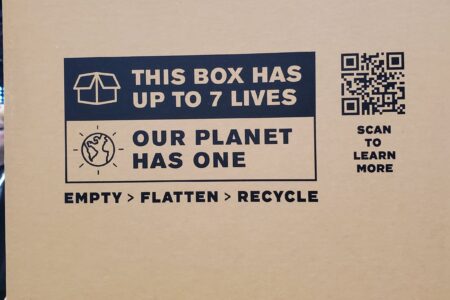Fad or Legitimate Coffee Category?

Photo courtesy of Bulletproof
While in Seattle, Washington for the Re:co Symposium and Specialty Coffee Association Expo last month, I toured two coffee shops — two radically different coffee shops: Starbucks’ new Reserve store and Bulletproof’s newest café.
Starbucks opened its first Reserve store in its headquarters, located in the SODO district of Seattle in February. Designed in an open marketplace style, the Reserve store has the full beverage menu and brewing methods that are available at the Seattle Reserve Roastery along with new drinks such as the Nitro Draft Latte and Bianco Mocha. The Reserve store also features the Princi bakery that offers freshly-baked breads and pastries, food items cooked on-premise, and a full mixology bar serving traditional Italian cocktails. The fireplaces, brick walls, and wood accents and floors, add to the cozy lounge ambiance. The Reserve store also has multiple private rooms that can be rented for meeting spaces.
Across town, the atmosphere in Bulletproof’s café, is quite different. The company’s third café, which opened in late 2017, is the first in its home city of Seattle (the other two are in California). The new Bulletproof café is situated in the South Lake Union area, across the street from Microsoft (and a booming district for the biotech industry). Bulletproof Coffee appeals to millennials (or as one Re:co Symposium speaker referred to them, the “avocado toast” generation). A large segment of this café’s customer base is the morning post-workout crowd, given its close proximity to a gym.
Founded by “biohacker” (it’s my understanding that biohacking is the process of making changes to your lifestyle in order to “hack” your body’s biology to feel your best) Dave Asprey, the new Bulletproof café has circadian-compliant lighting that changes throughout the day to match circadian rhythms (which reportedly supports improved sleep patterns), while also counteracting the harsh blue-light effect of computer screens, and an electrically grounded floor in the seating area to reduce static charge and inflammation.
The walls are peppered with sayings such as “Tap Into the Unlimited Power of Being Human” and “You. Only Better.” The Seattle café also features an in-house Bulletproof Vibe whole body vibration plate. The Vibe machine is designed to reduce recovery time after exercise, strengthen muscles and bones, improve mental acuity, improve flexibility, and stimulate microcirculation, including lymphatic fluid. I do not know if it truly works, but it was fun and strangely rejuvenating even after just a few minutes testing it.
The signature item on the menu is the original Bulletproof Coffee, which is made with Bulletproof coffee beans, Brain Octane oil and grass-fed butter. The store manager informed me that grass-fed butter emulsifies better than half ‘n half and milk with the coffee and oil. For those who want a vegan option or have a dairy intolerance, cacao butter and ghee butter, respectively, can replace the grass-fed butter. Upgrade options include Bulletproof Collagen Protein (for amino acids and skin, nail, hair, and joint health) and cacao nibs, among others. The menu also includes teas, bone broth, Bulletproof supplements, Bulletproof Collagen Protein Bars, and Bulletproof Ice Cream.
I admit, when I first learned of Bulletproof Coffee, the idea of the concoction shocked and unnerved me, and it seemed gimmicky. Butter in coffee? Why would anyone want to add butter (whether it’s grass-fed or not) to their coffee? But Bulletproof Coffee is not for those coffee drinkers seeking specialty coffee, those who grind the beans themselves and want to savour the flavour notes of the coffee. Bulletproof Coffee is more so an energy drink or “body fuel.” Furthermore, it supposedly reduces carb cravings and acts as a meal replacement.
The company buys coffee beans from only Rainforest Alliance-certified farms in Guatemala and Colombia, which behooves the producers. And if consumers choose a coffee-energy beverage rather than a sugary, carbonated energy drink or protein shake, then more coffee being sold and consumed, which benefits the overall coffee industry.
So, although I do not fancy it, grass-fed butter-blended coffee might not be such a bad thing for the industry if more coffee is being purchased, sold and consumed, and coffee’s healthy attributes (high in polyphenols and antioxidants) are being touted — along with providing the desirable energy boost that the target demographic highly craves…



